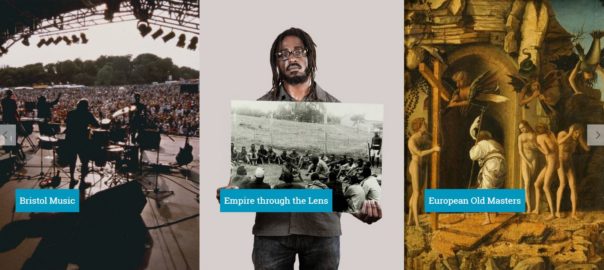We recently (softly softly) went live with Exhibitions Online.
A place to translate our in-house exhibitions for an online audience, we worked with Mike and Luke at Thirty8 Digital to create a narrative structure with scroll-through content and click-through chapters on WordPress. They built in lovely features such as object grids, timelines, slideshows, maps and quotes.
There are a few exhibitions already up, past (death: the human experience) present (Empire through the Lens) and future (What is Bristol Music?). We’ve most recently used it for our European Old Masters gallery to showcase a beautiful painting we have on loan for two years: St Luke Drawing the Virgin and Child by Dieric Bouts (I discovered the Pantone app with this one, taking the red from the gallery to use online. V satisfying). I’m currently working with the exhibition team to get our Pliosaurus! exhibition up – watch this space for some fun things with that one, which we’re hoping to use for interp in our Sea Dragons gallery at Bristol Museum & Art Gallery too.
(For the What is Bristol Music? exhibition opening in May 2018, we’re using WP plugin Gravity Forms to collate peoples’ experiences and pictures of the Bristol music scene to be featured in the physical exhibition. Chip in if you have a story to tell.)
So far, we’ve found the content and arrangement really depends on the exhibition. The idea isn’t to simply put the physical exhibition online (I say ‘simply’, as if it would be) but instead to use the format and content of the exhibition to engage with people in a different environment: albeit one where we’re competing with a thousand other things for people’s attention. Exhibitions which have been and gone have been slightly more challenging, as the content was never intended for this use and has needed some wrangling. The more we use it though the smoother the process is getting, now that we know what we need and it being on teams’ plans as something to consider.
We’re still in the early stages of reviewing analytics to see how people are using it. Initial results are heartening, though, with a few thousand visits having had minimal promotion. At the moment most people are finding it from our what’s on pages (where most of our traffic to the main website is anyway) and we’re thinking about what campaigns we can do to get it out there more.
Any feedback or thoughts, hmu → fay.curtis@bristol.gov.uk
